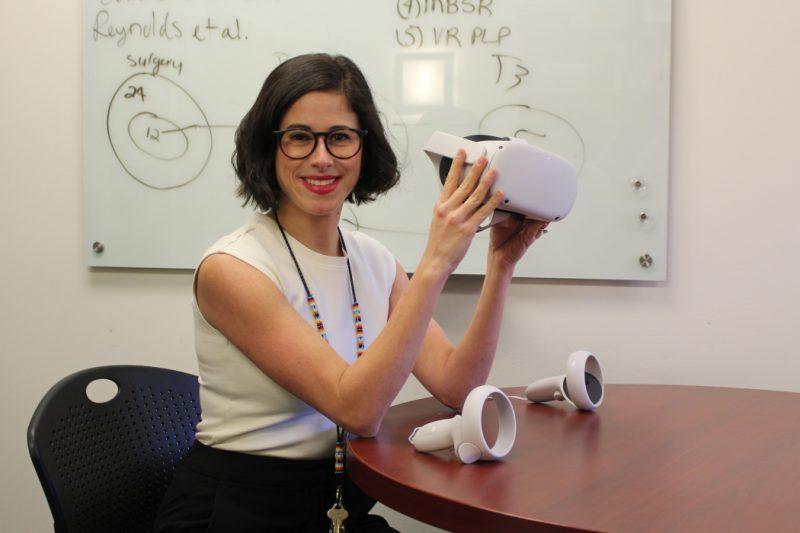
Though painful, trigeminal neuralgia can be treated in a variety of noninvasive and surgical means. Some of these options can provide relief for years.
Trigeminal neuralgia is a chronic condition that affects the trigeminal nerve. This nerve carries sensations from your face to your brain. People who have trigeminal neuralgia experience painful jolts along this nerve. These jolts can be caused by mild, everyday stimulation such as using a toothbrush.
At first, trigeminal neuralgia episodes are typically short and mild. As the condition progresses, attacks tend to become longer and more painful.
There are a variety of treatment options available that can help manage this condition, including medications, injections, and surgery.
The primary treatment for trigeminal neuralgia is medication. Some are able to manage their condition with medication alone and never need to look into other treatment options. Medications that can treat trigeminal neuralgia include:
- Anticonvulsants: Anticonvulsants can help stop pain signals sent to your brain.
- Muscle relaxers: Muscle-relaxing medications can help ease tension and reduce nerve activity
If you don’t respond well to medications, or if you stop responding to medications, your doctor might recommend additional treatment options. This could include:
- Botox injection: Botox can relax facial muscles and ease pain.
- Glycerol injection: During a glycerol injection, a needle is inserted into an opening in the base of your skull so that a small of glycerol can be injected into the spinal fluid that surrounds your trigeminal nerve. This damages the nerve and stops the pain.
- Microvascular decompression: Microvascular decompression is a surgical procedure. During this procedure, the blood vessels that touch the trigeminal root will be moved or removed completely. This can stop the nerve from malfunctioning and can alleviate pain.
- Brain stereotactic radiosurgery (Gamma Knife): This procedure uses radiation directed at the root of the trigeminal nerve to damage the nerve and eliminate pain.
- Ballon compression: Ballon compression uses a needle inserted through your face and into your trigeminal nerve. A catheter is then inserted, and a pressurized balloon on the other end is inflated. This damages the nerve and blocks pain signals.
- Radiofrequency thermal lesioning: Radiofrequency thermal lesioning destroys nerve fibers using an electrical current. The current is inserted by placing a hollow needle through your face and into your trigeminal nerve.
Many people have found relief for trigeminal neuralgia pain by using natural or complementary methods. These methods haven’t been as well studied, and there’s currently no data to support their use as a reliable method of pain relief.
However, some people report excellent results. It’s always a good idea to check with your doctor before you look into any natural or complementary treatments.
Popular natural treatments for trigeminal neuralgia include:
There are a large number of things that can trigger a painful trigeminal neuralgia episode. Avoiding these triggers can help you manage your condition and reduce pain. Not everyone with trigeminal neuralgia will have the same triggers, but there are a handful of common triggers. These include:
- wind hitting your face
- touching your face
- drinking without a straw
- being in very dry air
- washing your face in certain ways
- coming in contact with very hot liquids
- coming in contact with very cold liquids
- chewing hard foods
- shaving
- applying makeup
- brushing your teeth
- consuming certain foods and drinks, especially coffee, citrus, and spicy foods
Of course, some of these triggers are much easier to avoid than others. You can wear a scarf to protect your face from the wind, but you can’t avoid brushing your teeth. However, you can remember to do daily hygiene activities slowly and carefully.
Your doctor might be able to recommend a time of day that’s best to take your medication so that there’s less chance of pain during these activities.
Living with a chronic neurological disorder can be daunting, but you don’t have to face it on your own. There are great resources you can turn to for help. You can check out:
- The American Chronic Pain Association: The American Chronic Pain Association has support groups around the country and online where you can talk with people who understand what you’re going through.
- The Facial Pain Association: You can find a peer mentor, join a support group, and more, with the resources available from the Facial Pain Association.
- Nerve Pain Support Facebook group: You can connect to others with nerve pain to share stories, tips, and local resources with this Facebook group.
- The U.S. Pain Foundation: The U.S. Pain Foundation has a library of resources you can use to learn more about your condition, look into patient financial assistance programs, find medical care, and more.
Trigeminal neuralgia is a chronic pain disorder that causes episodes of sharp nerve pain on one side of the face. Episodes come on suddenly and can be triggered by light, certain foods, and other everyday sensations.
The condition is treated with medications, including anticonvulsants and muscle relaxers. For some people, this is enough to manage trigeminal neuralgia. When it’s not, injections to stop the pain, as well as minimally invasive surgical procedures to damage the nerve and block pain, are also treatment options.
Treatment Options for Trigeminal Neuralgia: Meds, Surgery, and More - Healthline
Read More

No comments:
Post a Comment